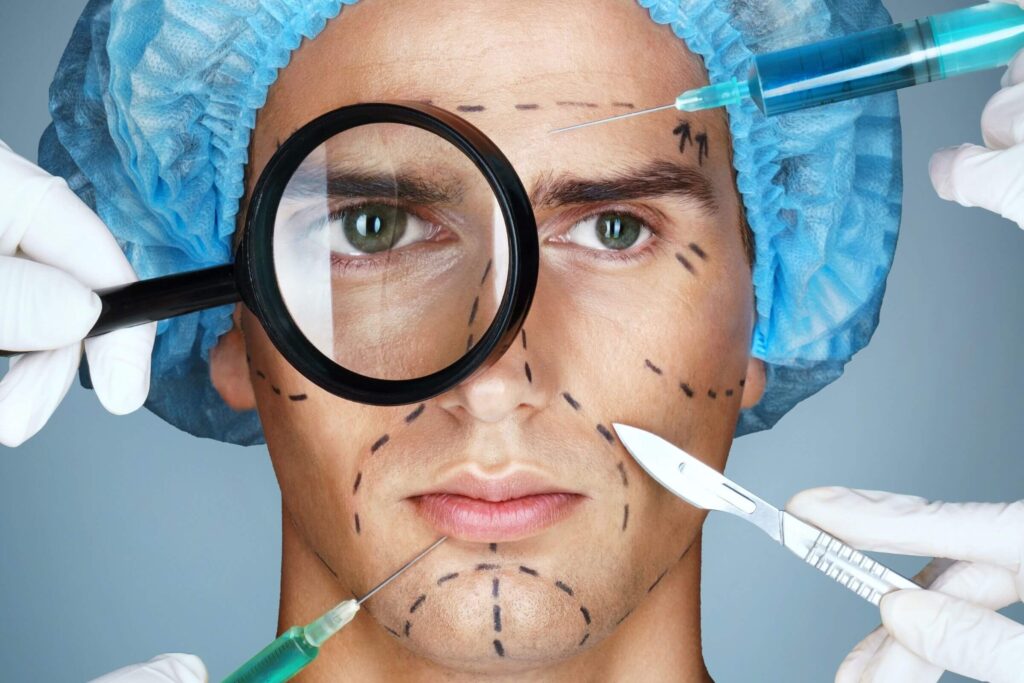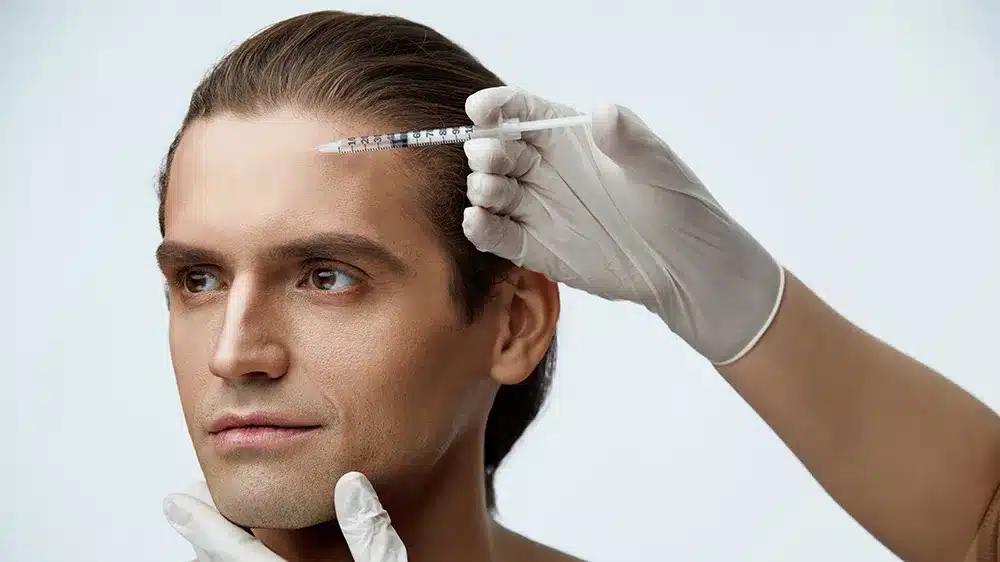Plastic surgery frequently draws up thoughts of shaped features and wrinkle-free appearances. However, beneath the flash and beauty hides a transforming force committed to healing and regeneration. Reconstructive rhinoplasty surgery can save the lives of people who have been affected by birth abnormalities, traumas, infections, or burns. It’s a journey of regaining function, self-assurance, and a sense of normalcy rather than just being about beauty.
Table of Contents
Exploring Reconstruction and Restoring Form and Functionality
Plastic surgery and cosmetic surgery isn’t just about looking younger or changing your features. Reconstructive surgeons are specially trained doctors who use surgery to fix problems with your body caused by birth defects, accidents, illnesses, or injuries. These problems can affect your health, looks, and even how you move. Here are some of the many reasons why you might need to see a reconstructive surgeon:
| Birth Defects and Syndromes: | Cleft lip and palate: This birth defect makes it hard to eat, speak, and breathe normally. Reconstructive surgery can fix these problems.Craniofacial anomalies: These are problems with the shape of your skull and face. Surgery can help you look more normal and improve your confidence.Hand deformities: Extra fingers, webbed fingers, or misshapen hands can be made more functional and look better with surgery. |
| Trauma: | Facial injuries: Accidents, falls, and animal bites can damage your face. Reconstructive surgery can restore your normal appearance and function.Brachial plexus injuries: These injuries affect nerves in your arm, making it hard to move. Reconstructive surgeons can repair the nerves and improve your arm function. |
| Cancer | Breast Cancer: Some women who have breast cancer treatment may choose to have reconstructive surgery. This surgery can help restore the shape of their breasts after a mastectomy (surgery to remove all or part of a breast).Skin Cancer: Reconstructive surgeons can remove skin cancer and minimize scarring at the same time.Head and Neck Cancer: Surgery for head and neck cancer can remove tumors and other affected tissue. Reconstructive surgery can help restore your appearance and ability to eat, speak, and breathe normally. |
| Other | Excess Skin: Losing a lot of weight can leave you with loose, saggy skin. Reconstructive surgery can remove this extra skin and make you feel better about your appearance.Nose Problems: A deviated septum (crooked wall in your nose) can make it hard to breathe. Reconstructive surgery, also called rhinoplasty, can straighten the septum and improve your breathing. It can also fix injuries that changed the shape of your nose.Limb Salvage: This surgery helps save limbs that are badly injured or diseased. Reconstructive surgeons work to repair blood vessels, remove damaged tissue, and rebuild bone structures. In some cases, amputation may be necessary.Lymphedema: This condition causes swelling because of problems with the lymphatic system, which drains fluid from your body. Reconstructive surgeons can create new connections between lymphatic vessels to improve drainage and reduce swelling. |
These are just some of the many reasons why you might need to see a reconstructive surgeon. If you have a health problem that affects your appearance, movement, or ability to perform daily activities, talk to your doctor about whether reconstructive surgery could be an option for you.
The Psychological Effects Over and Beyond Physical Repair
Patients who undergo reconstructive surgery benefit much psychologically in addition to physically. Studies show significant improvements in mental health following surgery. When physical restrictions or abnormalities are removed, people feel more confident, which promotes increased comfort in social situations and active participation in life.

Furthermore, reconstructive surgery improves self-image and lessens social stigma by easing the weight of worry and sadness brought on by living with physical abnormalities or trauma aftermaths. The ability to speak clearly, eat with ease, and move freely are examples of restored function that enhances quality of life by enabling people to resume activities that were previously impeded by their illness. Therefore, reconstructive surgery has a psychological influence that goes well beyond only changing a patient’s appearance. It also gives them back their self-esteem, emotional relief, and general well-being.
The Leading Edge of Reconstruction Technology for an Improved Future
The field of reconstructive surgery is undergoing a remarkable evolution, propelled by groundbreaking innovations that promise superior outcomes for patients. One such advancement is the advent of 3D printing technology, revolutionizing the creation of customized implants for facial and breast reconstruction, as well as bone grafts. This heralds a new era of personalized surgery, where implants are tailored precisely to fit each patient’s unique anatomy. Additionally, bioengineered skin substitutes are emerging as a game-changer in treating large burns, offering the potential to minimize scarring and accelerate healing processes.
Another important advancement that improves accuracy and reduces scarring during intricate reconstructive surgeries is the incorporation of robotic-assisted surgery. Plastic surgeons can perform surgeries with the highest level of precision possible thanks to robotic arms. Reconstructive care is also becoming more widely accessible because to the growth of telemedicine consultations, especially in underprivileged areas. Telemedicine is overcoming geographic obstacles and guaranteeing that patients receive prompt, thorough care wherever they may be through enhanced patient outreach and remote monitoring of recuperation. These developments highlight how reconstructive surgery may change lives, paving the way for patients to have access to safer, more efficient, and more convenient treatment alternatives in the future.

While reconstructive surgery offers tremendous benefits, it’s important to understand the realities of the process:
- Reconstructive surgery is typically not a solo endeavor but rather a collaborative effort involving various specialists, including plastic surgeons, oncologists, and rehabilitation therapists. This multidisciplinary approach ensures that patients receive comprehensive care tailored to their individual needs, addressing not only the physical aspects but also the emotional and psychological aspects of recovery.
- Navigating the emotional journey post-surgery can be challenging, highlighting the importance of a robust support system comprising family, friends, and therapists. Emotional support is vital for patients to cope with the ups and downs of the healing process effectively. Additionally, financial considerations are crucial, as reconstructive surgery can incur significant costs.
- While insurance coverage may help alleviate some of the financial burden, patients should also explore available financial assistance programs to ensure access to necessary treatment without undue financial strain.
This is why, by addressing these various aspects holistically, patients can embark on their reconstructive surgery journey with confidence, knowing they have the support and resources needed for a successful recovery.
The Societal Impact & Wider Access to Reconstructive Surgery
The societal impact of reconstructive surgery extends well beyond individual patients, creating a ripple effect of positive change that benefits society as a whole. By restoring function and confidence, reconstructive surgery enables individuals to return to work or school, thus increasing productivity and contributing to the workforce and economy. Moreover, addressing functional limitations at their source through reconstructive procedures can help prevent future healthcare complications, ultimately reducing healthcare costs for society. As success stories become more prevalent, public awareness and advocacy for reconstructive surgery grow, potentially leading to increased funding for research, improved accessibility to care, and the development of more advanced techniques.
However, despite its life-changing possibilities, numerous barriers to wider access to reconstructive surgery persist. Advocacy for broader insurance coverage, particularly for underserved populations, is crucial to making these procedures financially accessible. Additionally, increasing the number of qualified plastic surgeons and breaking down social stigmas surrounding reconstructive surgery are essential steps toward ensuring that all individuals have access to the transformative benefits of reconstructive procedures. Continued investment in research and development is also imperative to drive innovation and further enhance patient outcomes in the field of reconstructive surgery.
Conclusion: Reconstructive Plastic Surgery Transformative Power for the Future
For those dealing with physical difficulties, reconstructive plastic surgery is a potent instrument that can bring healing and hope. Beyond appearances, it restores confidence, functionality, and a feeling of normalcy. Reconstructive surgery will keep illuminating a route towards a better future for many more individuals as the discipline develops with cutting-edge procedures, wider access, and raised awareness. We can make sure that people who most need this revolutionary ability may access it by acknowledging its enormous impact and striving to remove existing obstacles.

